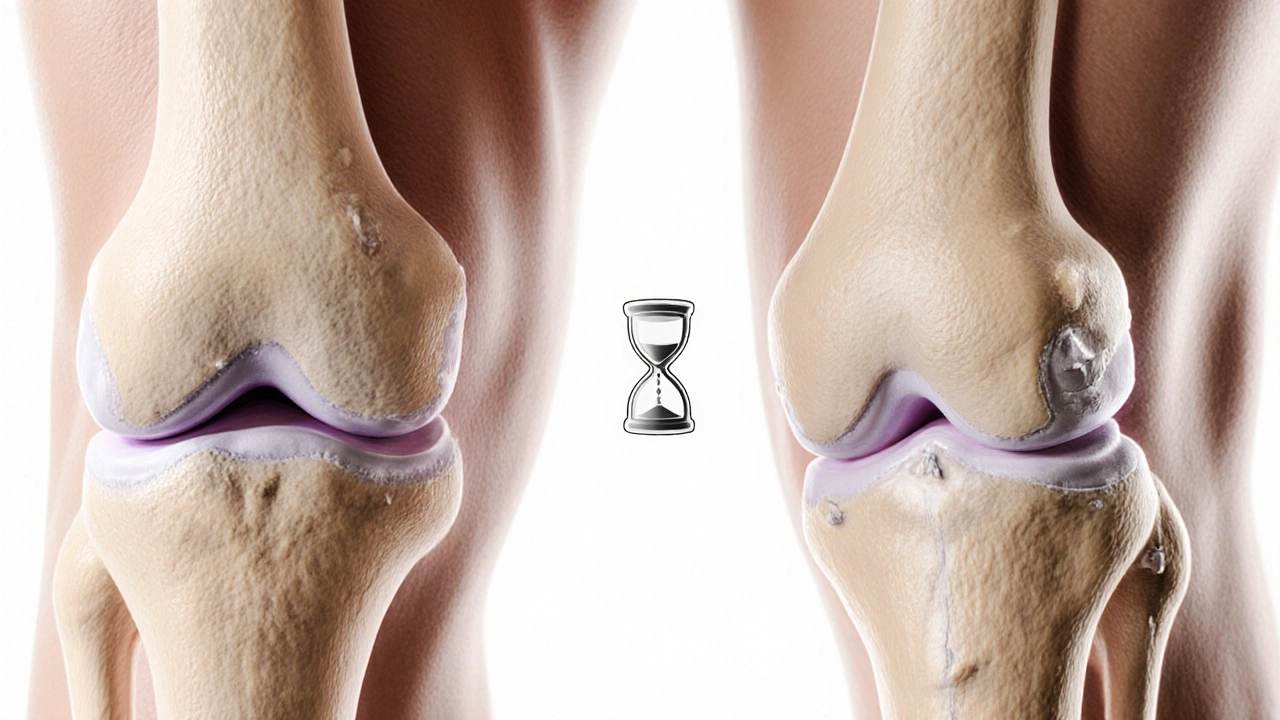Delaying knee replacement raises infection, clot and revision risks, worsens pain and mobility, and adds hidden costs. Learn the medical, functional and financial consequences of waiting too long.
Read MoreTotal Knee Arthroplasty Risks
When weighing the decision to replace a damaged joint, it helps to understand total knee arthroplasty risks, the potential complications that can follow a knee replacement surgery. Also known as knee replacement complications, these risks shape how surgeons plan, how patients prepare, and how recovery unfolds.
One of the most talked‑about concerns is infection, the intrusion of bacteria into the surgical site or prosthetic components. Studies from Indian orthopedic centers show infection rates around 1‑2 % when strict sterile protocols are followed, but the number can rise sharply if wound care lapses. Preventive steps include pre‑operative skin cleansing, a short course of antibiotics, and careful monitoring of wound drainage. If infection does set in, early intervention with targeted antibiotics or, in severe cases, a revision surgery can protect the implant and limit tissue damage.
Another frequent headline is blood‑clot formation, medically called deep vein thrombosis (DVT). The immobilization that follows knee replacement creates a perfect storm for clotting, especially in patients over 65 or those with a history of cardiovascular disease. Anticoagulant medication, compression stockings, and getting the leg moving as soon as safely possible cut the risk dramatically. In fact, modern protocols aim for a DVT rate below 0.5 % by combining medication with early physiotherapy.
Beyond infection and clots, prosthetic loosening, the gradual loss of grip between the implant and bone is a long‑term worry. Bone quality, activity level, and the precision of implant alignment all influence how long a knee prosthesis stays secure. Patients with osteoporosis or high-impact lifestyles may see loosening sooner, leading to pain and the need for a revision procedure. Surgeons mitigate this by using cemented fixation in older adults or newer porous‑coated implants that encourage bone in‑growth.
Anesthesia‑related issues, while less common, can still pop up. Nerve irritation, allergic reactions, or cardiovascular stress during surgery may extend hospital stays. Modern anesthesia teams use regional blocks combined with light general sedation to keep the patient comfortable while minimizing systemic impact. Post‑operative pain control often blends nerve blocks, oral analgesics, and non‑pharmacologic methods like ice therapy.
Finally, successful outcomes hinge on rehabilitation, the structured program of exercises and activity progression after surgery. Early range‑of‑motion exercises, followed by strength training, help preserve the joint’s function and reduce the chance of stiffness. Weight management and low‑impact activities such as swimming or cycling further protect the implant. Patients who fully engage in their rehab plan typically report higher satisfaction scores and fewer late‑stage complications.
Understanding these total knee arthroplasty risks gives you a realistic picture of what to expect and how to protect yourself. Below you’ll find a curated set of articles that dive deeper into each risk factor, offer practical tips for prevention, and share real‑world patient experiences to help you make an informed choice.





